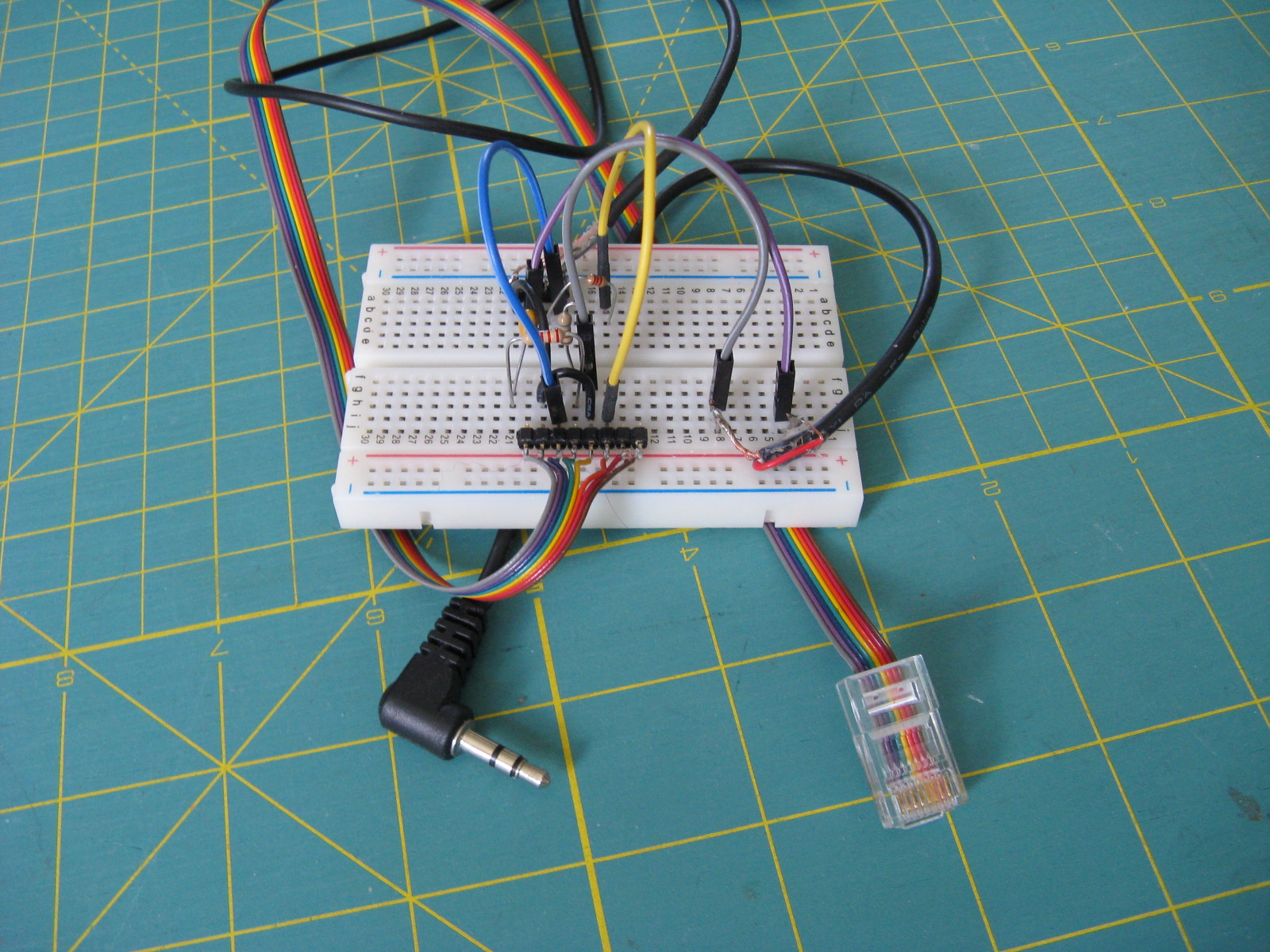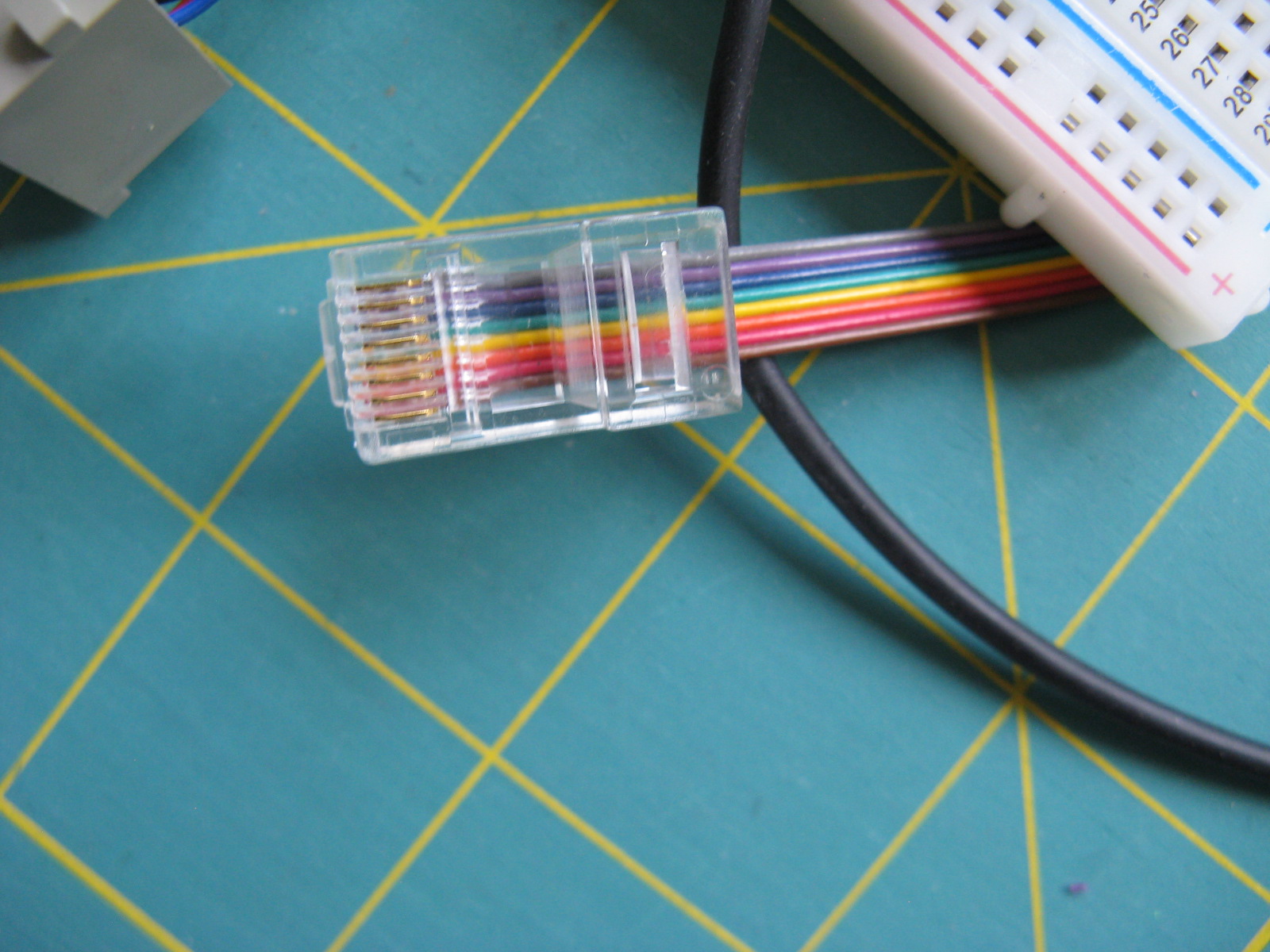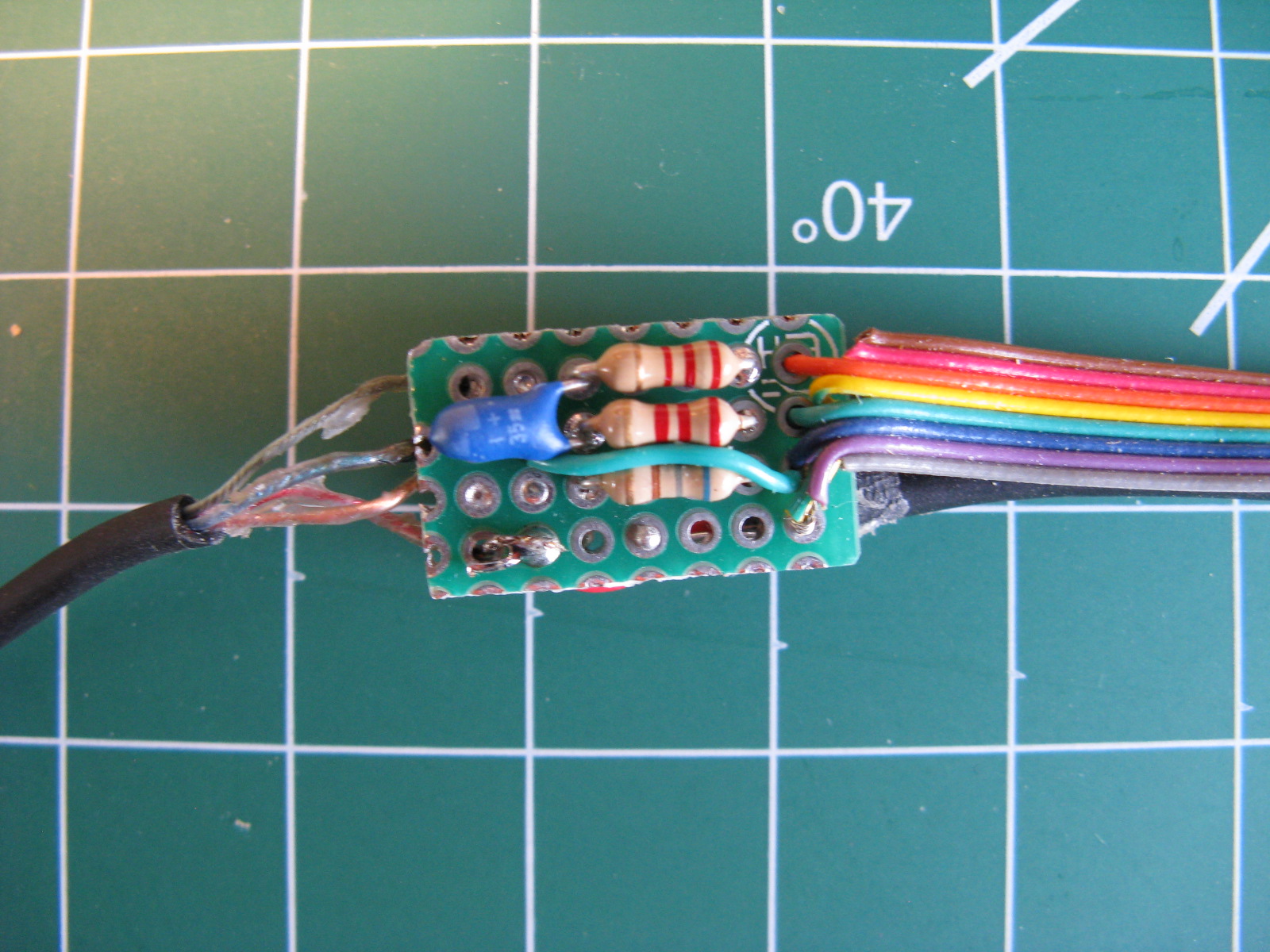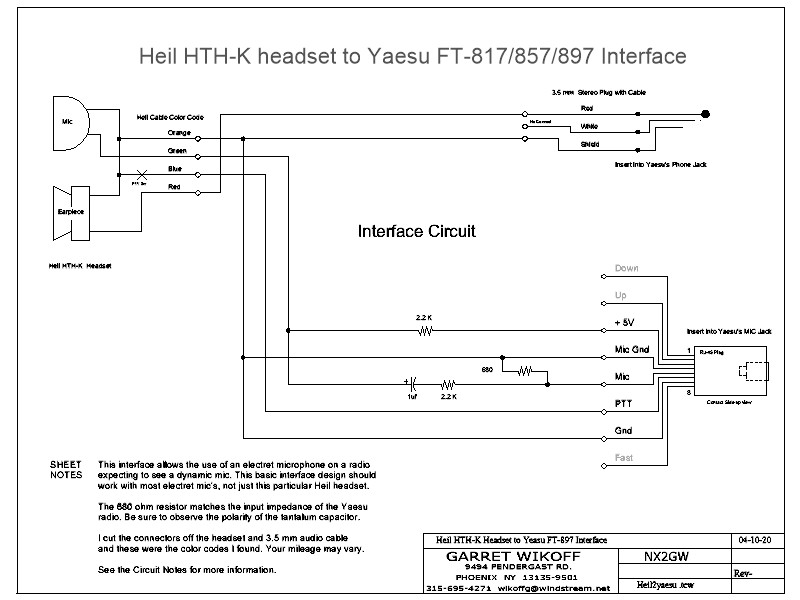
I have two older Yaesu transceivers, an FT-817 and an FT-897. I like using a headset, so I decided to try using Heil's lightweight and cheap HTH series headsets with these radios. I already had one I was using with a Kenwood TH-D7 that worked quite well. I ended up giving the TH-D7 to a new Tech so I had the headset to experiment with.
The Yeasu's were originally equipped with MH-31 microphones that used a dynamic element. Dynamic mics are low impedance devices with low level outputs, around 5 millivolts. The MH-31's mounting cords are terminated in an 8 pin RJ-45 type connector that plugs into the radio.
The Heil headsets use an electret microphone cartridge that outputs a much higher voltage and needs to be powered. In addition, I wanted to be able to swap the MH-31 with the Heil headset without playing with Mic Gain in the radio's menu system. This resulted in the Interface gadget I describe here.
I tried a couple of ideas before finally coming up with one that works quite well, at least according to my On-Air reports.

This is a picture of the Heil headset, connectors and prototype board with the interface circuitry. By the way, these headsets are only about $30. The Kenwood version uses an odd double pin plug so since the radio was gone so I decided to just cut it off the end of the cord.

Here is a closeup of the interface prototype. Kind of a tangle! The way I figured out which wire was which was by consulting the manual for the Kenwood radio. In it there was a schematic showing how the contacts on the mic and speaker jacks were wired. After cutting the connector off the headset cord, leaving a inch or so, I could strip the tail back and, with an ohm-meter figure out which colored wires were ground, mic, earphone and PTT button.

Here is a closeup of the bottom of the RJ-45 plug showing the contacts and wires. I made my own cable but you could use an Ethernet cable. If you do, the transparent connector let's you see which wire is which.

Here is a closeup of the finished interface built on a small piece of Perf-Board. The headset cable is to the Left and the cables to the Yaesu are to the Right. If all is well and I wired it correctly, I will shrinkwrap it later. By the way, those are 1/2" squares in the background.

Here is a JPG of the interface schematic. It's a little fuzzy but there is a link below to download a PDF of the drawing.

Download the Interface Schematic PDF here >>Interface Schematic PDF.
Next is a detailed set of Circuit Notes for the interface. Again There is a link below to download a PDF of the Notes.
Heil HTH-k Headset to Yaesu FT-817/FT-857/FT-897 Interface Circuit Notes
This circuit interfaces a Heil headset with electret microphone element to Yaesu transceivers that came equipped with a dynamic microphone.
The Yeasu FT-817, FT-857, FT-897 and many other radios originally came equipped with dynamic microphones with an output around 5 millivolts. As with virtually all electret mics, the Heil microphone element has a built-in JFET that results in an output many times higher.
This circuit implements a resistive pad consisting of a 680 ohm, impedance matching resistor which along with a 2.2K series resistor creates a voltage divider to reduce the level to that of the original dynamic element. This allows the Heil headset and Yaesu microphones to be used interchangeably without having to adjust the Mic Gain menu options on the radio.
The Heil microphone also must be supplied with a positive voltage to power the JFET. This is accomplished by taking +5V from the radio and applying it to the microphone in the headset through a 2.2K load resistor. A 1uf tantalum capacitor blocks this DC voltage from entering the radio on the Mic input lead while passing the audio from the headset Mic.
The Heil headset has a Push To Talk (PTT) switch built into the cord which through this interface connects ground to the PTT lead from the radio, keying the transmitter.
All of this connects to the radio via an 8-position RJ45 type connector which is inserted into Mic Jack on the radio. Looking at the schematic you see the connector from the bottom, the side opposite the latching tab.
Lastly, the earpiece in the headset interface simply connects to the phones jack on the radio. In the case of the FT-897 a 3.5mm to 1/4" adapter is required but with the FT-817 and FT-857, the 3.5mm plug goes directly into the SP/PH jack. Looking at the interface schematic, you can see that a stereo plug is used. That works because the ring and sleeve are tied together in the radios. The white ring lead in the audio cable, is left unconnected.
The RJ-45 type plug in the drawing is shown with the latch down and the contacts up and to the right. In this position, you can see the individual wires and their colors. If you are using a scrap Ethernet cable you can thus identify which wire goes to which contact.
The 3.5mm plug and cable was 1/2 of an audio extension cord cut to length, stripped and prepared for connection to the interface.
This interface was designed specifically for the Yaesu radios above but with a little ingenuity and the right connections, the theory can be applied to almost any radio. The Heil HTH-Y headset comes with a single pin 4 conductor plug that along with a matching jack would eliminate the need to cut the connector off the headset cord.
The layout and construction of the interface is left up to the builder.
Download the Circuit Notes PDF here >>Interface Notes PDF.
This interface works quite well. Next I plan to make one for the FTM400 in my car that uses a 6 pin RJ-25 type connector. The MH-48 microphone that comes with the FTM400 already uses an electret element so the interface should be much simpler.
An interesting trivia note. The RJ in the RJ-45, RJ-25, etc. refers to the term Registered Jack. This series of modular connectors were developed by Bell Labs in the 1970's to increase flexibility and standardization in connecting telephone sets to the network. I spent 39 years working for Ma Bell and her offspring and I remember at the time thinking these tiny little plugs would never last. In actuality they turned out to be very durable and of course have spread well beyond what we used to call "POTS" or Plain Old Telephone Service. For more detail check Wikipedia.
Garret Wikoff NX2GW